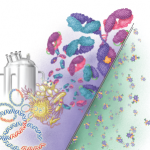“The challenge to create biosimilar drugs is essentially a reverse-engineering process,” Dr. Felix said.
The manufacturer of a biologic agent starts with a unique cell line and takes many proprietary steps to ensure that the final product has the target protein and minimal to no impurities. A company trying to copy a biological has only the active drug substance in its final form, which has already begun to degrade.
“The manufacture of a biosimilar is not impossible,” Dr. Felix said, but adds that it will not be identical to the original biological. What must be an exact copy in order for the FDA to approve a biosimilar drug, he believes, is the protein’s amino acid sequence.
In addition to a biological’s molecular structure, its manufacturing process is also important for reproduction. Manufacturing steps are not identical between drug makers of biologicals, Dr. Felix said.
Whereas many differences in the manufacturing process of biologicals will not matter, some differences are important, Dr. Felix stressed. Even a single process change by the original manufacturer after a biological goes to market can require further clinical trials if it is major, such as changing cell culture media or using a new cell line.
Because creating a biosimilar agent will use different manufacturing steps, Dr. Felix expects that FDA approval of biosimilar products in the United States will most often require phase I and phase III clinical trials in a single disease state as well as postmarketing surveillance. He said that chemistry and manufacturing controls will be needed to compare a biosimilar to the reference product.
Challenges of Biosimilar Drugs
A biosimilar product is “expected to produce the same clinical result in any given patient,” according to the FDA.
Dr. Strand called that expectation “a tall order” for monoclonal antibodies and soluble receptors, and warns that process changes for a biosimilar agent may result in unpredicted effects.
“The challenge,” Dr. Strand said, “is to demonstrate that differences in a biosimilar product do not have a significant impact on clinical efficacy, safety, and stability.”
She believes that the FDA, which has not yet issued a guidance document on biosimilar products, will ask drug makers to prove biosimilarity using predefined margins.
“The FDA must set scientific criteria that address the key question of ‘How similar is similar enough?’ Given the complex nature of monoclonal antibodies and soluble receptors, it’s unlikely there will be a one-size-fits-all definition,” Dr. Strand commented.



